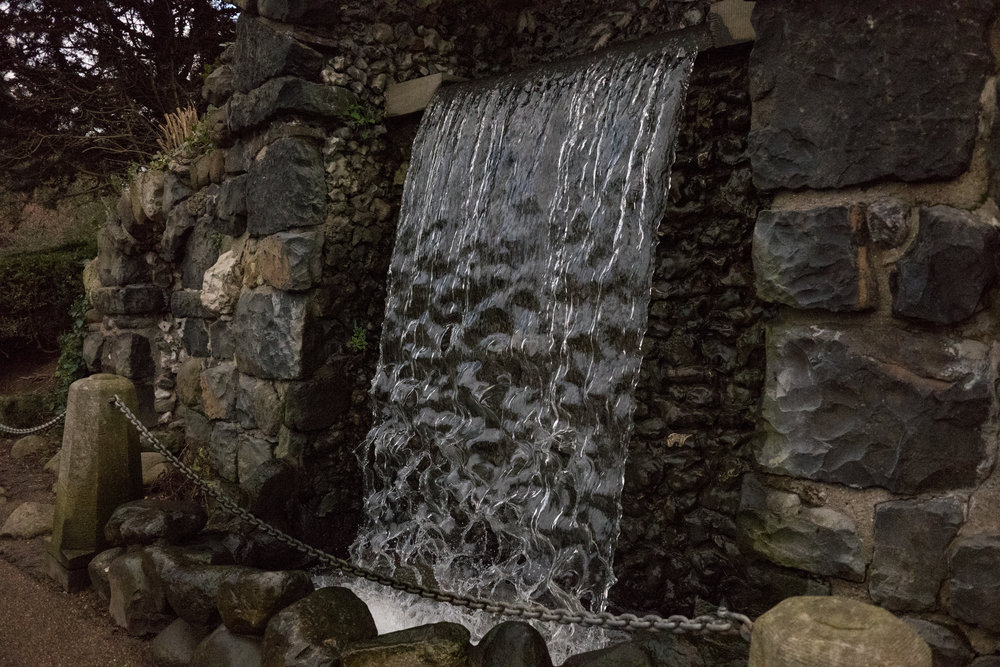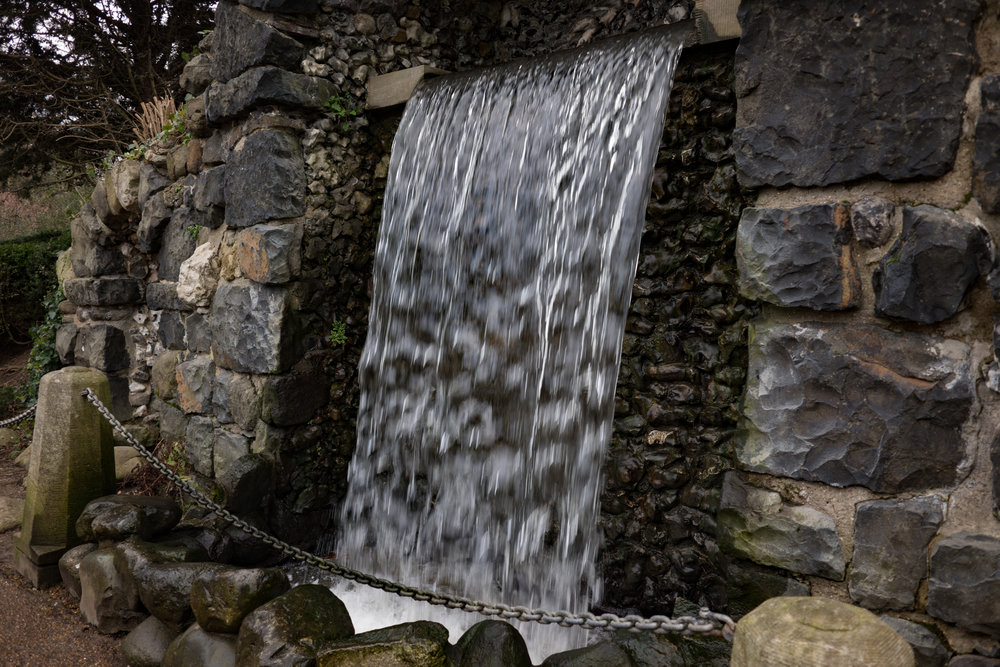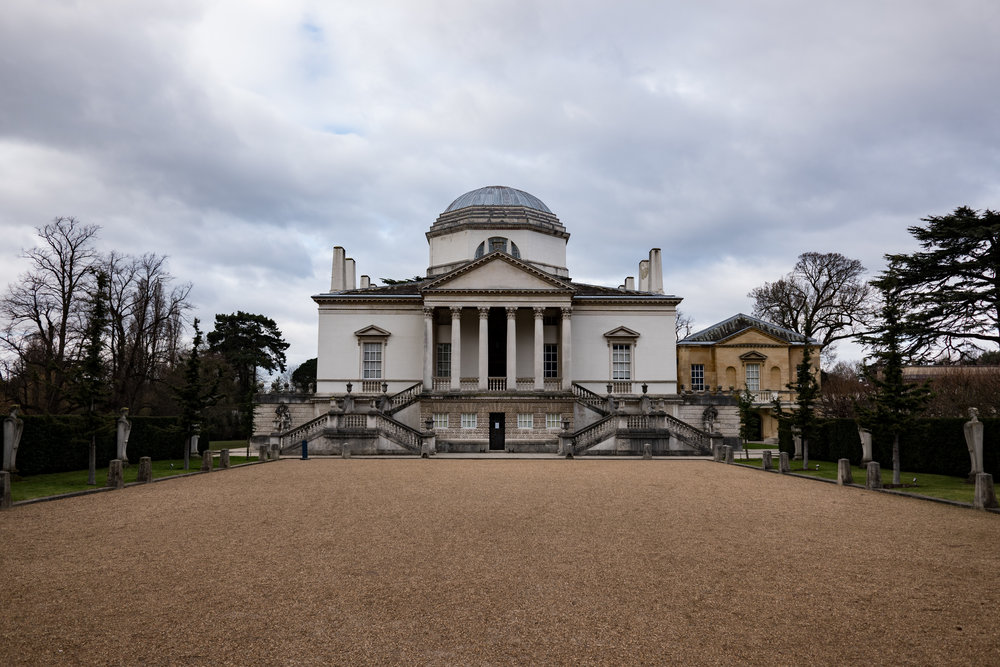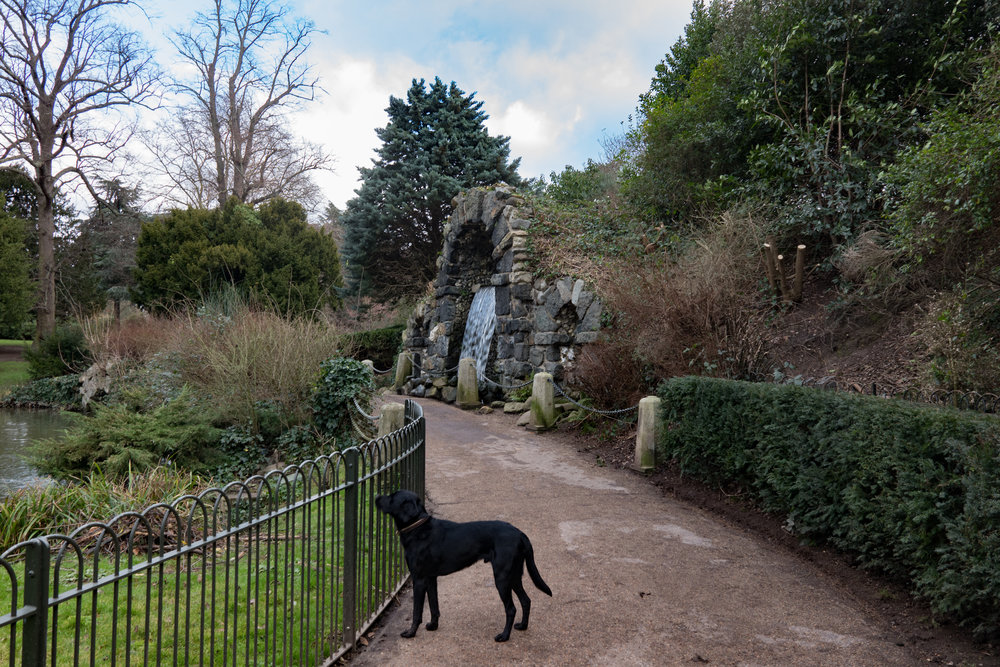
Macfilos Weekender with Mike Evans
ISO 6400 in broad daylight, surely some mistake. No, it was an experiment and the subject is a little waterfall of impeccable pedigree and no little fame. I was out with the Leica CL in one of London’s most charming locations, the grounds of Chiswick House. This innocent-looking cascade was constructed in 1736 by William Kent as part of his general redesign of Lord Burlington’s classic gardens surrounding the delightful Palladian house. It is quite famous in itself, although to walk along the path and glance at it you might not be all that impressed — until you recognise the pedigree, that is.
On this occasion, however, I was particularly focused on the water. I love waterfalls and was fascinated by the capturing of the Plitvice Lace in Croatia in Kevin Armstrong’s recent article for Macfilos. By comparison with this multiplicity of torrents, the Chiswick House cascade is a Lilliputian trickle. But it was flowing so fast and was so well defined as a continuous sheet of water that I was itching to slow it down, all the better to appreciate the beauty of the water.
So I dialled in 1/25,000s and set the aperture to the maximum f/2.8 (on the 18mm pancake Elmarit). The camera took care of the rest. Auto ISO was pre-set to a maximum of 6400 and, while I could have taken it higher, this was just sufficient to grab the above shot. I am impressed by the resulting image at 6400 — as well as by the way in which the faster shutter has almost managed to tame the torrent. The water really comes to life. It has created a wholly different picture to the 1/80s replica shot below.

Below is a general view of the surroundings of the 1736 cascade which looks out onto the man-made lake, forming a central feature of this historic garden. Kent’s masterpiece covers 65 acres, from classical vistas to ponds, fountains and an 18th century wilderness. The gardens at Chiswick House were an attempt, largely successful, to imitate the Roman style, especially that of Hadrian’s Villa Adriana at Tivoli, which in turn followed the gardens of ancient Greece. The little cascade, a symbolic grotto, was inspired by the upper cascade at the Villa Aldobrandini in Rome.
And below, for good measure, is Chiswick House itself — symmetry encapsulated. a glorious example of neo-Palladian architecture designed by Lord Burlington himself and completed in 1729. In 1758, following Burlington’s death, it was ceded to George, 4th Duke of Devonshire whose main country seat was at Chatsworth in Derbyshire.
The road names of the suburb of Chiswick are greatly influenced by the Burlington and Devonshire associations — Burlington Lane, Devonshire Road, Duke’s Avenue and, even, Edensor Road which can be traced back to the village of Edensor in Derbyshire. The Duke didn’t appreciate seeing Edensor from the windows of his grand house at Chatsworth, so he had it moved — lock, stock and smithy — to the other side of the hill. Yet in Chiswick, Edensor Road remains, leading down to the river Thames from the grandeur of Chiswick House. Incidentally, Edensor is pronounced Ensor, just as Chiswick is pronounced Chisick. Go figure, as some might say.
The house and gardens at Chiswick House, which are in the care of English Heritage, are well worth a visit. Start your journey here.
All images taken with the Leica CL and 18mm f/2.8 Elmarit-TL.



Please could you write an article on your impressions of the new Elmarit 18mm f/2.8 TL-lens. I am considering it for its compact size. Though I am pondering whether the Summicron 23mm f/2.0 TL-lens or the 18mm Elmarit might be the better option. The Summicron is lightly faster but also slightly larger and does not provide as wide an angle of view. It would be greatly appreciated if you could also make a comparison between the two lenses regarding image quality etc. Thank you very much.
Thanks, Andy. I hadn’t planned a comparison between the Elmarit and the Summicron. However, I can tell you that the 18mm Elmarit is super sharp and focuses quickly. In fact, it’s a joy to use. The Summicron, as you say, is a bigger unit and, if you are happy with the wider angle view of the Elmarit and don’t need the extra speed, then the Elmarit is the better choice. I find it very useful to mount on the camera for those days when I’m not really wanting to carry around anything more bulky. It is great for casual street photography and at f/8 has a usefully wide in-focus area, ideal for zone focus work. When I have a bit more experience I will bear in mind your suggestion.
Thank you for your feedback, Mike! I appreciate your opinion regarding the 18 mm Elmarit lens. It is good to learn that it is a fine lens and that optical quality was not scacrified for its compact size. It is very appealing for sliming down the Leica CL, which thus becomes a camera one can always carry along.
I have never shot a waterfall with the Leica X, shot many with my Nikon kit. This may inspire me to both shoot a waterfall or two with the X, and write something about the experience.
Good idea, Dave, and let us see the results…..
I never realised that what you have done there was possible Mike, I must try it one day, great effort, if not a particularly spectacular waterfall.
Quite the counter to the "HD" thing where the water looks like a smear, an awful contrivance.
The CL is certainly a very good machine, Leica should be proud of their effort.
On the Chiswick House front, I am not sure that it is neo-Palladian, rather it is yer actual Palladian.
From my memory, it is an exact copy of the Rotunda in Vicenza, which is where Palladio came from. The Rotunda stands outside that town about a mile or two from where there are over 150 Palladian houses, all of which were constructed during his lifetime.
It certainly isn’t spectacular, but quite nice. I’m no expert on architecture, Palladian or otherwise, but all I know is what I read on the Chiswick House website:
Chiswick House is a Palladian villa in Burlington Lane, Chiswick, west London, England. A "glorious" example of Neo-Palladian architecture in London, the house was designed by Lord Burlington, and completed in 1729. Wikipedia
As I understand things Mike, didn’t he buy the plans in Italy whilst on one of those grand tours that the wealthy used to take part in?
Perhaps, exact copy is over-egging the pud, the original one is older and it stands on the top of a hillock with some rather grand steps leading up to it.
I have been to both, and somehow the original does not seem that spectacular, even though it is, and the (neo) copy in Chiswick feels like the real thing, even though it isn’t, which was the point I was trying to make.
I used to support Wikipedia financially, but now believe it to be as reliable as the Daily Mail, I read both occasionally, but regard neither as biblical truth.
I’m really not sure, Stephen. I got that quote from the English Heritage website, not from Wikipedia (although it is clearly a quote from Wiki). I’m not sure it really matters in the context of this little article.
I don’t know why the Duke was offended by the sight of Edensor. I went there years ago and it was very attractive.
Perhaps it wasn’t as "picture postcard" in the 18th century as it is now. And perhaps the new location on the other side of the tracks / hill suits it better. I presume you didn’t check to see if you could still see it from the windows of Chatsworth?
Really enjoyed this on a snowy day here in Central NY, think you should have your loyal followers start a challenge on CL for specific for specific subjects. Thank you for all the wonderful weekend by your guests, this has to be the best site for opportunity for all to showcase their work.
Thanks, John.
Thanks for a nice Sunday outing, Mike. And it is really good to see a waterfall as water and not as milk !
Yes, I agree. When I was taking the picture I wished I had had a faster lens but, of course, it wouldn’t have stopped the water flow any more effectively since 1/25000s is the fastest shutter speed on the CL. I could probably have reduced the ISO by two stops — probably to 1600 — with an f/1.4 lens, though.